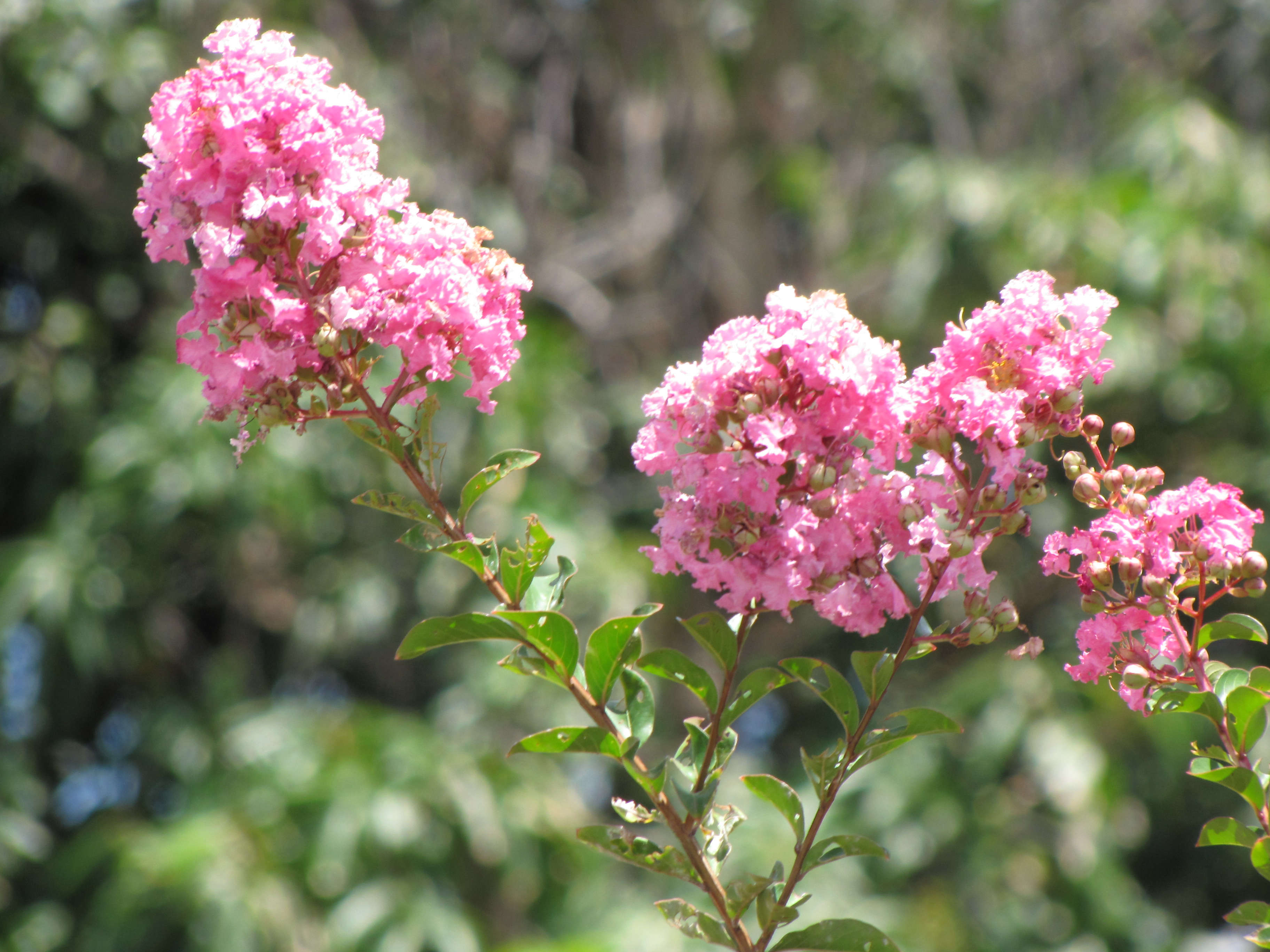Crape Myrtle, Lagerstroemia indica: “Lilac of the South”
If you grew up in the south, like I did, you surely know and love crape myrtles. No matter how suffocating the summer heat in Memphis, we could count on the little row of crape myrtles planted in the hellstrips along our narrow street to brighten our listless, air conditioner-hugging days. As our tiny lawns turned brown and other, less heat-loving plants lost their vigor these small trees burst into dazzling, long-lasting fuchsia blossoms. Our drab aging neighborhood suddenly appeared uncharacteristically ready for a joyful celebration. All these years later, I am still grateful to the unknown person who thought to install those lovely reliable bloomers.

It took me many years of living in New York City to realize that I was wrong in my belief that crape myrtles could not survive our northern winters. In fact, since 1959, industrious hybridizers at the U.S. National Arboretum have been working to improve crape myrtles, making them more mildew and disease resistant as well as hardier. The most successful cultivars developed in this pioneering program are the result of crosses of L. indica, the most common species in the U.S., with L. fauriei, a species with striking red-brown trunks introduced from Japan.

The nearly 30 hybrids released by the Arboretum are named to honor indigenous tribes i.e. ‘Lipan’, ‘Tonto’, ‘Sioux’, ‘Yuma’. They have led to much improved and more versatile crape myrtles which now come in smaller forms, including dwarfs, that are more appropriate for our less expansive modern gardens. They can survive a broader climate range, are resistant to mildew (formerly a big problem with L. indica), flower in a much wider selection of colors and beautify the winter landscape with multi colored peeling bark.
Cheat Sheet
- Its extraordinarily long bloom time, approximately 60 to 120 days, makes crape myrtle a show stopping specimen tree or shrub, especially since it has four season interest with attractive seed heads, fall color and its distinctive bark.
- Because minimal pruning is advised, select your crape myrtle carefully to be sure it will be a good size for your space.
- The showy bark of crape myrtle is enhanced by an underplanting of an evergreen ground cover such as liriope, ajuga, euonymus, or juniper.
Keep It Alive
- As long as its basic needs are met, crape myrtle, hardy in zones 6 to 9, is remarkably easy to grow. Plant it where it will get a minimum of six hours of full sun each day in soil that drains well.
- Water new plants generously until they are established and able to tolerate drought conditions.
- To encourage rounds of repeat blooms, remove the spent flower heads.

Crape myrtle is a native of Asia where it was favored by the Tang dynasty in China more than 1,000 years ago. It was known there as the “Monkey Tree” because its trunk was too smooth for monkeys to climb. In this country crape myrtle has been around since revolutionary times. In fact records at Mount Vernon, George Washington’s estate, show that Lagerstroemia indica seeds arrived there in the late 1700s.
It is interesting to note, however, that after more than 200 years of growing this plant here, there is still a raging controversy about the correct way to prune it. Many gardeners, probably trying to reduce the height of the plant, commit what is called “crape murder” by lopping off the tops of the main vertical branches. This effectively destroys the graceful shape of the tree and is still frequently seen both in the south and elsewhere.

According to Wayken Shaw, a gardener at the Brooklyn Botanic Garden in charge of the Lily Pool area which contains a number of well established crape myrtles, this type of pruning is known as “pollarding” and has been around for centuries. He says the L. indicas at BBG were allowed to grow in their natural shape over the years. He advises gardeners to use a very light touch in cutting back these plants. “Managing them, at this point,” says Shaw, “is about thinning them out periodically to better showcase their beautiful form and exfoliating bark.” Since crape myrtles bloom on the current season’s growth, Shaw says he prunes in late winter or early spring and rarely needs to perform any major structural cutting.
N.B.: This post is an update; it was first published February 2017.
For more information on our favorite trees, see our Garden Design 101 guides, including Trees: A Field Guide to Planting, Care & Design. A few suggestions for fruit trees:












Have a Question or Comment About This Post?
Join the conversation (0)